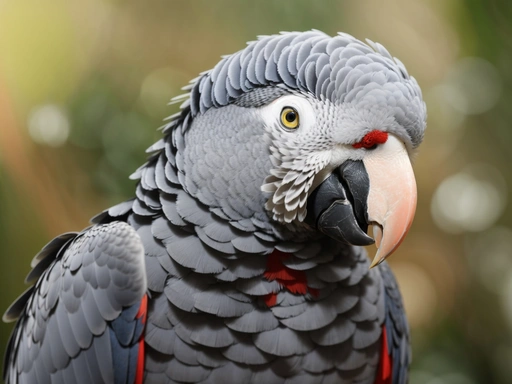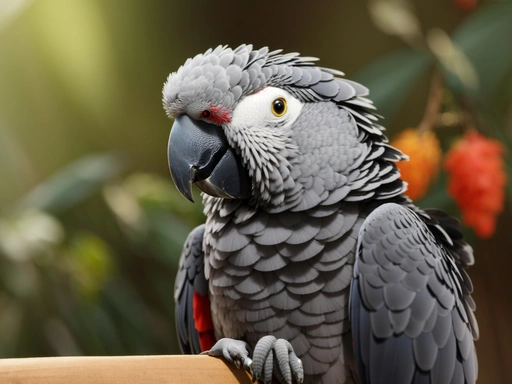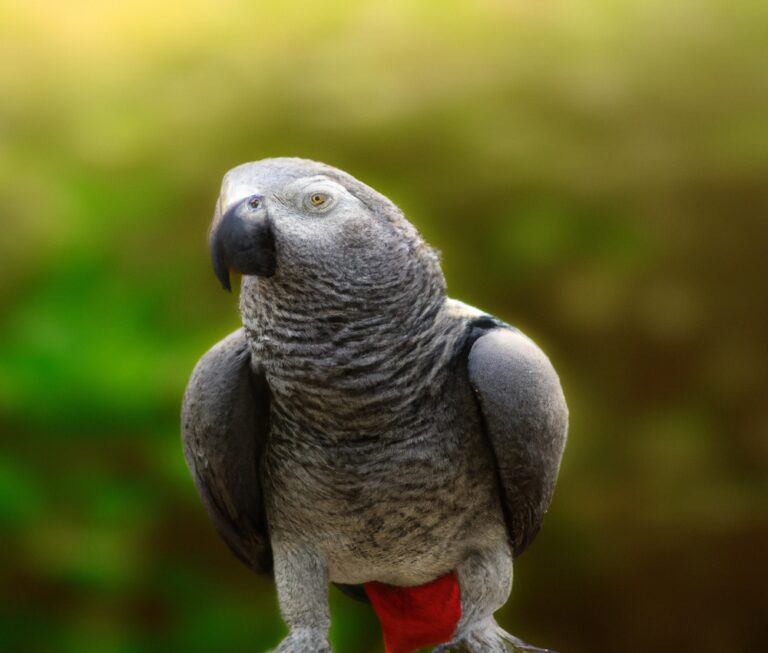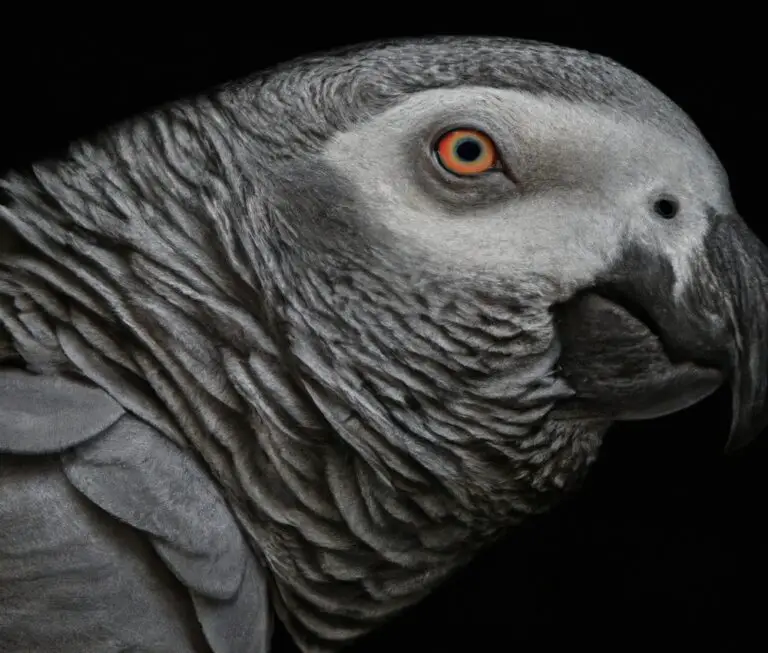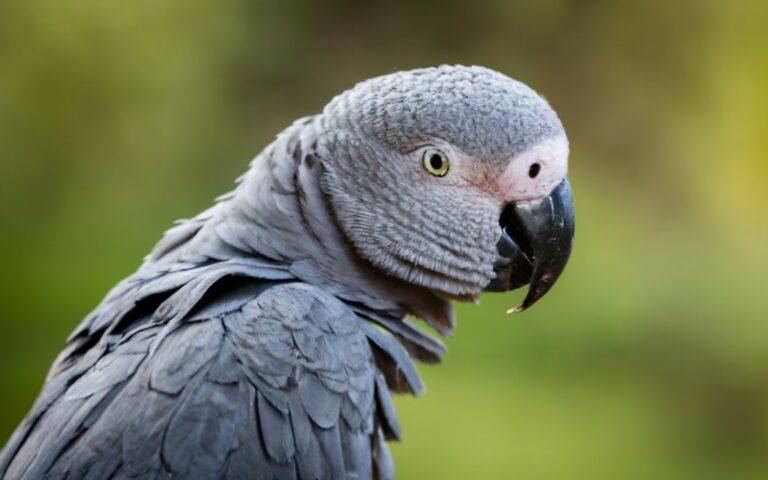How Do African Grey Parrots Cope With Seasonal Changes?
Key Takeaways:
- African Grey Parrots show behavioral adjustments in response to seasonal changes.
- These parrots exhibit variations in activity levels and vocalizations throughout the year.
- African Grey Parrots rely on environmental cues to adapt to changing seasons.
- They may experience physiological and hormonal changes to cope with seasonal fluctuations.
Are you curious about how African Grey Parrots navigate the ever-changing seasons?
These remarkable birds have captivated the hearts and minds of bird enthusiasts around the world.
As someone who has spent countless hours studying and observing these intelligent creatures, I can assure you that African Grey Parrots possess a unique set of characteristics that enable them to adapt to seasonal changes.
From their stunning plumage adaptations to their emotional intelligence and cognitive flexibility, these parrots have developed fascinating coping mechanisms.
In this article, we will delve into the world of African Grey Parrots and explore how they manage to thrive in different seasons.
So, let’s embark on a journey to better understand these extraordinary birds and their ability to navigate the shifts of nature.
| Seasonal Changes | Coping Mechanisms of African Grey Parrots |
| Winter | African Grey Parrots fluff their feathers to trap heat and keep themselves warm. They may also seek shelter in their nesting area or utilize artificial heating. |
| Spring | During the spring, African Grey Parrots may become more active, displaying increased vocalizations and social behaviors as they look for a mate or establish territories. |
| Summer | During summer months, African Grey Parrots may engage in activities such as bathing and preening to regulate their body temperature. They may also seek shaded areas to avoid direct sunlight. |
| Fall | As the weather cools down in the fall, African Grey Parrots may spend more time indoors and engage in foraging activities to keep mentally stimulated. |
| Year-round Adaptations | African Grey Parrots have a unique ability to maintain a stable body temperature through behavioral thermoregulation, where they adjust their behavior to cope with temperature changes. They also have a specialized respiratory system that allows them to efficiently exchange heat and conserve energy. |
Understanding the African Grey Parrot
African Grey Parrots are fascinating birds with unique characteristics and high emotional intelligence.
African Grey Parrot: A Brief Introduction
The African Grey Parrot is a highly intelligent and popular pet bird known for its exceptional mimicry skills and ability to communicate with humans.
It has a distinctive gray plumage with a bright red tail, and it originates from the rainforests of West and Central Africa.
African Grey Parrots are social birds that thrive on mental stimulation and require a lot of attention and interaction.
They can live for several decades and make wonderful companions for those willing to invest time and effort into their care.
Unique Characteristics of African Grey Parrots
African Grey Parrots are known for their exceptional intelligence and ability to mimic human speech with impressive accuracy. They have a unique feather coloration with shades of grey, white, and red-tailed feathers.
These parrots have a strong bond with their owners and require mental stimulation to thrive.
Additionally, they possess a complex social structure and have the ability to solve problems and learn tasks quickly.
Emotional Intelligence of African Grey Parrots
African Grey Parrots are known for their exceptional emotional intelligence. They can understand and interpret human emotions, forming deep bonds with their owners.
They can also display empathy and offer comfort when their owners are feeling down or stressed.
This unique ability makes them wonderful companions and a true delight to interact with.
Seasonal Changes and African Grey Parrots
African Grey Parrots have to adjust to seasonal changes in their natural habitat.
Exploring Seasonal Changes in the Natural Habitat
In the natural habitat, African Grey Parrots experience seasonal changes that affect their environment.
They adapt to these changes through physical and behavioral adjustments.
Their plumage, behavior, and physiology change to cope with variations in temperature, food availability, and breeding patterns.
Understanding these adaptations helps us support our African Grey Parrots during seasonal transitions.

Impact of Seasonal Changes on African Grey Parrots
Seasonal changes can have a significant impact on African Grey Parrots.
These intelligent birds are sensitive to variations in temperature, light, and food availability.
They may experience changes in behavior, appetite, and mood during different seasons.
Adequate care, proper nutrition, and a stable environment are essential to help them adjust and thrive during these changes.

Adaptability of African Grey Parrots
African Grey Parrots are incredibly adaptable creatures. They have developed various physical and behavioral mechanisms to cope with seasonal changes in their natural habitat.
Their plumage changes with the seasons, allowing them to blend in and regulate their body temperature.
They also display behavioral changes such as migratory movements and adjustments in feeding habits. Additionally, African Grey Parrots possess high levels of emotional intelligence, which helps them in coping with environmental changes.
They seek social bonding and engage in cognitive stimulation, which aids in their mental well-being.
Providing a stable environment, ensuring optimal nutrition, and supplementing lighting and temperature control can assist African Grey Parrots during seasonal changes.
Physical Adaptation to Seasonal Changes
African Grey Parrots have physical adaptations to cope with seasonal changes such as changes in their plumage, behavior, and physiological adjustments.
Plumage Adaptation in African Grey Parrots
Plumage adaptation is an important aspect of African Grey Parrots’ ability to cope with seasonal changes. Their feathers help them regulate body temperature, providing insulation during colder months and protection from excessive heat during warmer months.
Additionally, their plumage can change color slightly, allowing them to blend into their surroundings and avoid predators.
It’s fascinating to see how these birds have evolved to adapt to different environments!

Behavioral Changes in Response to Seasonal Variation
As the seasons change, African Grey Parrots exhibit a range of behavioral changes in response to these variations.
They may alter their feeding habits, migratory patterns, and daily routines to adapt to the shifting environmental conditions.
Additionally, their breeding behavior, vocalizations, and social interactions can also be influenced by seasonal changes.
These behavioral adaptations allow African Grey Parrots to navigate and survive through different seasons in their natural habitat.
Physiological Adjustments in African Grey Parrots
African Grey Parrots have remarkable physiological adjustments to cope with seasonal changes.
They have the ability to regulate their body temperature, which helps them adapt to varying climatic conditions.
Additionally, their feathers play a vital role in insulation, keeping them warm in colder temperatures and protecting them from excessive heat.
These adaptations enable African Grey Parrots to thrive in different environments throughout the year.

Mental and Emotional Coping Mechanisms
African Grey Parrots have various mental and emotional coping mechanisms to deal with seasonal changes.
Cognitive Flexibility in African Grey Parrots
Cognitive flexibility refers to the ability to adapt and change one’s thinking or behavior in response to different situations. African Grey Parrots exhibit impressive cognitive flexibility, allowing them to problem-solve, learn new tasks, and display creative behaviors.
This adaptability helps them cope with seasonal changes and changing environments.
When faced with new challenges, African Grey Parrots can quickly adjust their cognitive processes and find innovative solutions. They demonstrate a remarkable level of intelligence and flexibility in their cognitive abilities.
Social Bonding as an Emotional Support
Social bonding plays a vital role in supporting the emotional well-being of African Grey Parrots during seasonal changes. These birds are highly social and form strong bonds with their flock mates, as well as with their human companions.
The presence of a supportive social network helps to alleviate stress and anxiety, providing a sense of security and comfort.
Interactions with trusted individuals, whether avian or human, can help African Grey Parrots navigate the challenges of seasonal changes more easily.
Mental Stimulation and Enrichment Activities
Mental stimulation and enrichment activities are essential for the well-being of African Grey Parrots.
Here are some ideas to keep them engaged and stimulated:
- Puzzle toys: Provide puzzle toys that require problem-solving skills. This can include toys with hidden treats or toys that require manipulation to unlock a reward.
- Foraging opportunities: Hide treats or food in different parts of their enclosure, encouraging them to use their natural foraging instincts.
- Training sessions: Teach your African Grey Parrot new tricks and commands. This not only stimulates their mind but also strengthens the bond between you and your bird.
- Introduce new toys: Rotate and introduce new toys regularly to keep their environment interesting. Toys that require manipulation, such as puzzle boxes or hanging toys, can provide mental stimulation.
- Social interaction: Interact and spend quality time with your African Grey Parrot. They are highly social birds and enjoy the company of their owners. Regular social interaction can provide mental stimulation and prevent boredom.
- Environmental enrichment: Create a stimulating environment by incorporating different textures, colors, and sounds. Provide perches of varying heights, mirrors, and natural branches for them to explore and interact with.
- Music and audio stimulation: Play calming or stimulating music for your African Grey Parrot. They have a great ability to mimic sounds, so introducing new sounds and music can be mentally stimulating.
Remember, mental stimulation is crucial for the overall well-being of African Grey Parrots.
By providing a variety of enrichment activities, you can help keep them happy, engaged, and mentally stimulated.
Assisting African Grey Parrots through Seasonal Changes
Assisting African Grey Parrots through Seasonal Changes – Tips for helping your parrot adapt to different seasons.
Providing a Stable Environment
To provide a stable environment for African Grey Parrots during seasonal changes, it’s important to consider a few key factors. Firstly, ensure a consistent temperature range within their living space, avoiding extreme fluctuations that could stress them out.
Secondly, create a quiet and calm environment to minimize disturbances.
Thirdly, establish a regular routine for feeding, social interaction, and mental stimulation. Finally, provide a comfortable and secure enclosure with appropriate perches, toys, and hiding spots.
Meeting these needs will help African Grey Parrots feel safe and secure throughout the changing seasons.
Maintaining Optimal Nutrition
Maintaining optimal nutrition is crucial for the overall health and well-being of African Grey Parrots.
Here are a few tips to help you ensure that your parrot is receiving the necessary nutrients:
- Provide a balanced diet: Offer a variety of fresh fruits, vegetables, and leafy greens to meet their vitamin and mineral requirements.
- Offer high-quality pellets: Choose pellets specifically formulated for African Grey Parrots, as they provide essential nutrients and help prevent nutritional deficiencies.
- Limit seed and treat intake: While seeds and treats can be given as occasional rewards, they should not make up the majority of your parrot’s diet. Excessive intake can lead to imbalances and obesity.
- Supplement with calcium and omega-3s: African Grey Parrots have higher calcium needs, which can be met by offering calcium-rich foods or supplements. Omega-3 fatty acids, found in foods like flaxseeds, can also support their overall health.
- Ensure fresh water availability: Provide clean, fresh water at all times. Replace it at least once a day to prevent bacterial growth.
Remember, maintaining a balanced diet is essential for the optimal health of your African Grey Parrot.
Consult with a avian veterinarian or an avian nutritionist for specific dietary recommendations based on your bird’s age, health, and activity level.
Supplementing Lighting and Temperature Control
Supplementing lighting and temperature control is important for African Grey Parrots to mimic their natural environment.
Provide full-spectrum lighting to replicate the sun’s rays, and maintain an optimal temperature between 68-75°F (20-24°C).
Avoid exposing them to drafts or direct sunlight.
Use a thermostat to monitor temperature levels accurately.
Frequently Asked Questions
How long do African Grey Parrots live in the wild and in captivity?
African Grey Parrots have a relatively long lifespan.
In the wild, they can live for about 40 to 60 years.
However, in captivity, with proper care and attention, they can live even longer, often reaching up to 80 years or more.
Their lifespan can vary depending on factors such as diet, environment, and overall health.
Can African Grey Parrots be kept as outdoor pets?
No, African Grey Parrots should not be kept as outdoor pets.
They are highly sensitive to temperature changes, require a stable environment, and need social interaction.
Keeping them outdoors can expose them to health risks and stress.
It’s best to provide them with a suitable indoor habitat.
Do African Grey Parrots migrate during seasonal changes?
No, African Grey Parrots do not migrate during seasonal changes.
They are native to the rainforests of West and Central Africa, where the climate remains relatively stable throughout the year.
They have adapted to the consistent conditions of their natural habitat and do not need to migrate in search of food or better weather.
Instead, they stay in their territories and cope with seasonal changes by relying on their physical and behavioral adaptations.
What signs indicate that an African Grey Parrot is stressed during seasonal changes?
During seasonal changes, signs that indicate an African Grey Parrot is stressed include:
- Feather plucking or excessive preening.
- Aggressive behavior towards humans or other birds.
- Loss of appetite or weight loss.
- Decreased vocalization or unusual silence.
- Increased restlessness or pacing.
- Excessive vocalization or screaming.
- Changes in their normal routine or preferences.
Are there any precautions to consider during winter months for African Grey Parrots?
During winter months, there are a few precautions to consider for African Grey Parrots. First, ensure they have a warm and insulated environment.
Keep them away from drafts and provide additional heating if needed.
Second, maintain a consistent and appropriate temperature range. Avoid extreme temperature fluctuations that can stress them.
Finally, monitor their hydration levels and ensure they have access to fresh water at all times.
Concluding Thoughts
Final Verdict
African Grey Parrots are remarkable creatures with unique adaptations that help them cope with seasonal changes. From their plumage and behavioral adjustments to their emotional intelligence and cognitive flexibility, these parrots have evolved impressive coping mechanisms.
As caretakers, it is important for us to provide a stable environment, maintain optimal nutrition, and supplement lighting and temperature control to support their well-being during seasonal transitions.
By understanding and addressing their needs, we can ensure that African Grey Parrots thrive throughout the year.


